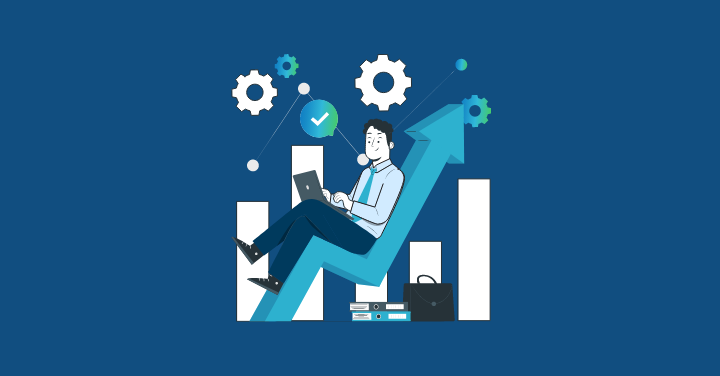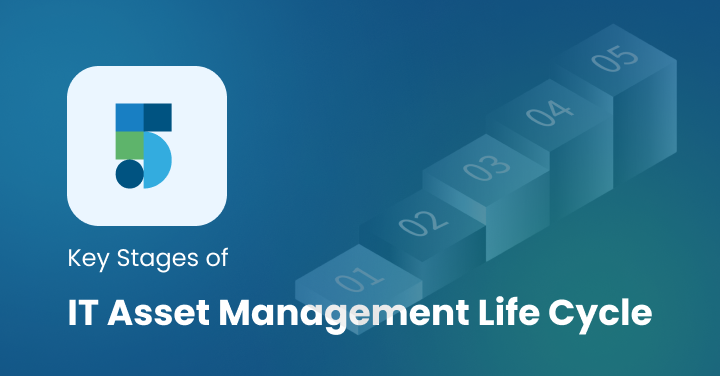ITAM and ITSM are two of the most ubiquitous terms used in the ITOps domain.
However, the use cases and working methodologies are completely different.
These are two ways to manage the IT operations of an organization, focusing on two distinct aspects: One focuses on managing all hardware and software assets, and the other, delivering IT services most efficiently.
While implementing these two methods, IT managers need to know the difference between the two to leverage their interdependencies and deliver the best end-user experience possible.
What is ITAM?
IT asset management (ITAM) is the process of managing and understanding the IT assets of an organization. It helps organizations improve IT investments, deployment, usage, and profitability.
The scope of ITAM includes all hardware, software, data center infrastructure (such as power and cooling), networks (both wired and wireless), security devices (such as firewalls), mobile devices (including smartphones), servers, storage equipment, computers, peripherals such as printers and copiers, network cabling equipment such as patch panels and switches.
IT asset management aims to maintain IT assets by ensuring that they are neither overused nor underused.
Additionally, ITAM can subdivide into two core functions: Hardware Asset Management and Software Asset Management.
Hardware Asset Management
As businesses grow and expand, the number of IT assets in the organization increases. Managing and optimizing many assets and their life cycle can be challenging to pull off.
Hardware asset management, which is a subset of ITAM, aims to create an inventory of all physical IT assets along with their configuration details to manage the asset life cycle.
Enterprises utilize hardware asset management to create an inventory of all configuration data used while diagnosing a problem.
Apart from this, it helps in managing sensitive data and recycling issues during the disposing of IT assets.
Software Asset Management
Software Asset Management is primarily focused on maximizing the return of investment of the software assets.
The companies can utilize the software licenses appropriately with license compliance on board.
The license compliance makes sure that the company has a proper official license for each software they possess and eliminates legal disputes.
Software Asset Management keeps teams informed about software’s expiry dates and helps them make decisions on the requirements and utilization.
It allows for internal audits to identify policy violations, potential workflow problems, and security breaches.
What is ITSM?
IT service management is the process of planning, implementing, operating, and optimizing IT services within an organization to maintain business operations.
The main goal of IT service management is to provide a stable and secure IT environment for employees and company data. Achieving this involves a few initiatives that include:
- Improve the availability of services
- Improve the performance of services
- Keep track of how much it costs to run these services
- Provide the tools necessary for people in the organization who are responsible for deploying and managing these services
Numerous processes come under ITSM. A few of them are as below.
Incident Management
Incident management is an approach for delivering a high-quality response to a problem or incident.
The objective of the incident management approach is to eliminate the underlying cause of incidents and reduce their frequency and impact on service users.
This includes deciding how to respond to service requests from customers, which may be related to incidents or not.
Problem Management
It is a set of processes and procedures to identify, analyze, and solve problems that occur with an IT service.
The process starts when a user reports an issue with an IT service or system to a problem manager.
The problem manager analyzes the reported issue and devises a solution. If there is no resolution, they escalate it to other problem managers for consultation.
Finally, if the issue cannot be solved, the support team works to mitigate its effect until it can be resolved in future updates or patches.
ITAM and ITSM: Working Together
ITAM and ITSM should co-exist because they complement each other.
ITAM offers a database of all hardware and software and the configuration details that form the basis to build a context while troubleshooting an issue/incident.
ITAM completes the incident life cycle process that results in faster identification of the root cause and thus better MTTR.
This is the reason why most modern ITSM tools like Motadata ServiceOps offer deep integration between ITAM and the service desk.
FAQs:
ITAM is a set of processes and practices designed to manage the lifecycle of IT assets, from acquisition to disposal.
This includes identifying, tracking, and controlling IT assets to ensure optimal utilization and compliance with regulations.
ITSM is a framework that defines processes and best practices for delivering IT services to end-users. It focuses on aligning IT services with business needs and ensuring customer satisfaction.
While ITAM and ITSM are both essential for IT organizations, they have distinct focuses:
- ITAM: Primarily concerned with the physical and logical assets of an organization, including hardware, software, and licenses.
- ITSM: Focused on the delivery of IT services to end-users, such as help desk support, incident management, and problem management.
Combining ITAM and ITSM can lead to:
- Improved cost management: By optimizing asset utilization and reducing waste.
- Enhanced service delivery: By ensuring that IT services are supported by the necessary assets.
- Increased compliance: By maintaining accurate records of IT assets and ensuring compliance with regulations.
- Better decision-making: By providing valuable insights into IT asset usage and performance.
Some common challenges include:
- Data quality issues: Ensuring that asset data is accurate and up-to-date.
- Integration complexities: Integrating ITAM and ITSM tools with other systems.
- Resistance to change: Overcoming resistance to new processes and technologies.
- Lack of skilled resources: Finding and retaining qualified ITAM and ITSM professionals.






